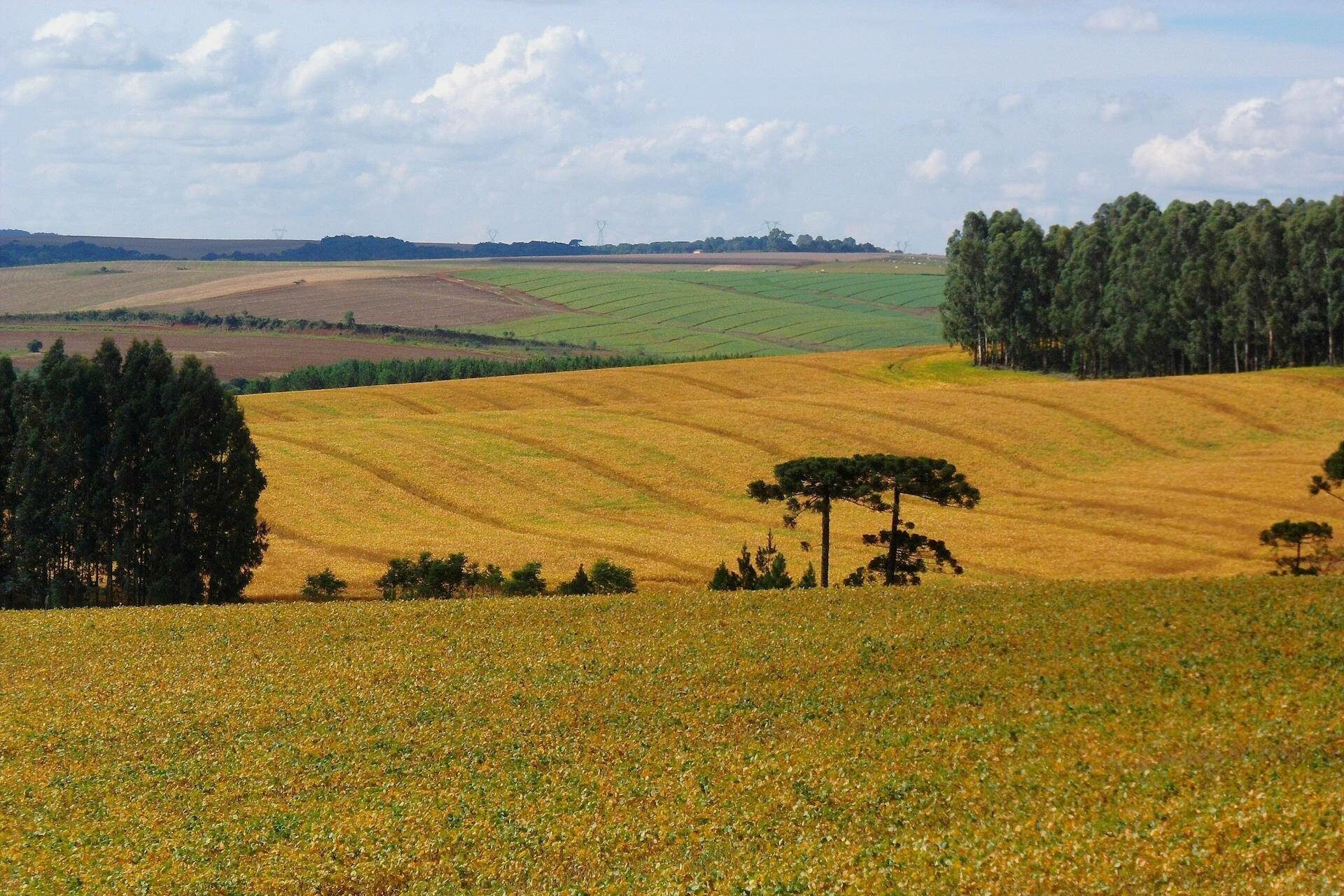
DONA EMMA — Whoever visits the entrance hall of the building of the head of education in Dona Emma, a town with just over 4,000 inhabitants in the southern Brazilian, is faced with a wall full of historical photographs of local families. Among them there are images of flags with the Nazi swastika .
One of the photographs shows children and a man in front of a school. In the background there is a Brazilian flag and a flag of Nazi Germany. The image is accompanied by the caption: “The private German school was maintained by the parents of the students with funds from Germany.”
In another photograph, seven men appear posing while one of them holds a Nazi flag. In the caption, they are described as “Hitler supporters in Nova Esperança,” a neighborhood in Dona Emma. The photographs bearing Nazi symbols are mixed with images of the families who founded the region. There is no indication of the names of the people in those in which the swastika appears.
According to Brazilian Law no. 7716 passed in 1989, it is a crime “to display symbols, emblems, ornaments, badges, or propaganda that use the swastika, punishable by two to five years’ imprisonment and a fine.”
Carlos Bartel is a history professor at the Instituto Federal Catarinense (IFC) in Ibirama, a town near Dona Emma, in the Brazilian state of Santa Catarina. He is also the author of an article about nazism in Ibirama, called “Nazism is out there ”, which analyzes the history of some municipalities in the Alto Vale do Itajaí region and the presence of Nazi groups.
German roots
According to the professor, Dona Emma was part of the Hamonia municipality, named after the city of Hamburg. The region was occupied by a private colonial effort led by the Hanseatic Colonization Society, a company from northern Germany, with headquarters in Hamburg.
“In the municipality of Hamonia there were several cells of the Nazi party . The most important figure in the region was the physician Friedrich Kröner, whom I mention in my article. He was a doctor who was brought here by the Hanseatic Colonization Society and was a member of the Nazi party — he had a membership card and everything. He got funding from the Nazi party to build a hospital for the Hamonia Colony and then for the town of Hamonia, of which Dona Emma was part,” he says.
Bartel explains that many Nazi groups were broken up under the Estado Novo (New State), a fascist-inspired dictatorship that ruled Brazil between 1930 and 1937, and some people were imprisoned, including Kröner.
Santa Catarina is the second state with the largest number of Nazi cells in the country, behind São Paulo , according to research done by historian Adriana Dias, who was one of the greatest references in research on neo-Nazism in Brazil. Considering the population of the two states, Santa Catarina would rank first in proportional terms.
Even if they are a historical record of local families, the photographs could not be exhibited in a public building, according to Bartel. For him, the photos should at least be accompanied by some contextualization or explanation. “They could put some critical captions, saying that unfortunately in the past of the municipality this existed. Until a while ago, people tried to erase this history here in the region, and now they make a point of proudly displaying it,” says the professor.

Hate speech rising
Agência Pública contacted Dona Emma’s city hall to ask for an explanation about the photos, but had not heard back by the time of publication.
Bartel says that extremist speech is gaining more and more strength in the region where Dona Emma is located, and that cases of racism and neo-Nazism are frequent, but often relativized or minimized.
“In Ibirama, there was an emblematic case in which a student drew a swastika on the board and wrote that the Nazis should have killed many more. I took it to the campus management and the management said it was ‘teenage stuff,’ that we were exaggerating,” he says.
Agência Pública contacted the institute, which replied: “In our records there is no formal complaint. We emphasize that the IFC Ibirama Campus has humanistic and citizen education as its principle, we value respect and accountability for acts of illegality and crime. We also promote actions that raise awareness and sensitivity in the teaching area with the support of the Diversity and Inclusion Centers.”
But extremism has created tension in the classrooms, according to the professor, with teachers suffering from persecution and requesting to be removed from their duties.
Last year, another investigation by Agência Pública revealed how a network of politicians in the region organized virtual attacks against teachers. At the time, an employee of Dona Emma’s city hall, lawyer Pablo Ideker, who still holds the position of legal advisor, participated in the defamation and persecution campaign against teachers, including Bartel, helping to promote hate messages on social media.

Threatening shadow
The attacks happened after teachers from the Instituto Federal Catarinense’s Ibirama campus protested against the Bolsonaro government’s decision to freeze part of the budget of public universities and educational institutes. Ideker filed a complaint against Bartel alleging irregularities in the exercise of public office.
According to Bartel, the Institute’s Ethics Commission accepted the complaint, even though it was advised against it by the Santa Catarina prosecutor’s office. The process was dropped in December 2022, after pressure from institutions and professors, but Bartel was not informed and only found out about the filing in April this year. Ideker was contacted, but said he would only answer after the report was published.
“We are left with this shadow threatening us. It is a very difficult situation from the psychological point of view, because we are there to teach and not to worry about criminal filings. Soon we will have to earn additional compensation for life risks,” he says.
At the time of the protests, the teachers from Ibirama were also attacked by State Representative Jessé Lopes, of Bolsonaro ’s party, who made offensive posts about Bartel, calling him a “scumbag” and a “leftist militant disguised as a teacher”. The deputy’s social media pages are full of attacks against educational institutions and teachers in Santa Catarina. Agência Pública contacted Jessé Lopes, but he did not answer the reporter’s questions.
The parliamentarian’s latest attack against Bartel took place in April, after the teacher was recorded in class by a student who then shared the audio recording with extremist groups on social media. While wishing Happy Easter to his students, Bartel had said that the Vale do Itajaí region didn’t have much to celebrate, due to a recent attack on a daycare center in Blumenau — another city in the Santa Catarina state — that left four children dead on April 5.
Bolsonaro movement
Bartel says that the case was taken to the institute’s management, which issued a note saying that the student shared the recording without thinking of the consequences.
“This congressman incites the population to violate and assault us. We are in a city with Nazi origins, this is like setting fire to a powder keg. This is not something done without thinking, if the student records me in the morning and in the afternoon the content has already gone viral on social media, this is a very well planned and coordinated attack,” he adds.
“I made a whole speech about these extremist groups, saying that the pro-Bolsonaro movement, hate speech and violence are part of the problem, not part of the solution. A student recorded my speech, which I don’t see as a problem, it is a public speech. The problem starts when you record it and send it to extremist groups that put together a piece of fake news and promote another lynching on social media,” he says.
“As these cases of violence have soared it is very difficult to separate what is serious from what is not,” says Bartel. “The moment a deputy, a councilman or a president publicly insults you, they are authorizing hate speech and setting an example for other people to do the same.”
Fonte
O post “Brazilian town displays photographs containing Nazi symbols in a public building” foi publicado em 19th maio 2023 e pode ser visto originalmente diretamente na fonte Agência Pública


